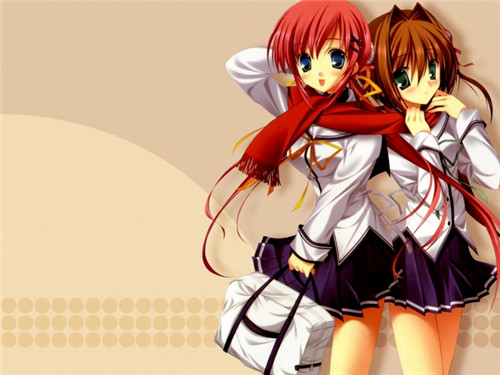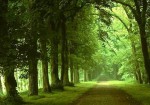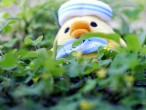
描写颐和园的英语作文小学六年级【一】
首先,我们来到了昆明湖。昆明湖的水清澈见底,像一面镜子,闪闪发光。昆明湖的湖十面上有一座十七孔桥,十七孔桥从中间一孔向两边数去,每边都是九孔,既对称,又表示是至高上的皇家之桥。
之后,我们来到了颐和园长廊。其长廊是吉尼斯之最,长廊长782米,廊上彩绘精美,计有1400多幅。彩绘中有四大名著——西游记、水浒传、红楼梦、三国演义和八仙过海。长廊有四个亭子,分别是春、夏、秋、冬四季为名。
游完颐和园,我们就回家了。
描写颐和园的英语作文小学六年级【二】
??颐和园英语作文范文The Summer Palace can be divided into two parts: Longevity Hill and Kunming Lake. The whole garden covers an area of 290 hectares, of which three- fourths consists of a lake and rivers. This imperial garden features 3,000 room-units and covers an expanse of 70,000 square meters with more than 100 picturesque spots of interest. The layout of the Summer Palace includes three groups of architectures: palaces where the emperor attended to state affairs, resting palaces of the emperor and empress, and sightseeing areas. Entering the East Gate we will come the office quarters. Entering the East gate we will come to the office quarters. The annex halls on both sides were used for officials on duty.
This is the Gate of Benevolence and Longevity. Above the door there is a plaque bearing the same name in both Chinese and Manchurian characters. The gigantic rock in the foreground is known as Taihu rock, or eroded limestone, quarried in Jiangsu Province and placed here to decorated the garden.
On the marble terrace sits a bronze mythical beast, known as Qilin or Xuanni. It was said to the one of the nine sons of Dragon King. A point of peculiar interest is that it has the head of a dragon, antlers of a deer, the tail of a lion and hooves of an ox, and is covered with a unique skin. IT was considered an auspicious creature that brought peace and prosperity.
This grand hall is the Hall of Benevolence and Longevity. It was built in 1750, and was known as the Hall of Industrious Government. Emperor Qianlong ruled that the halls where monarchs attended to state affairs would be named after them. After the rebuilding of the Summer Palace, the hall was renamed, suggesting that benevolent rulers would enjoy long lives.
The arrangement of the hall has been left untouched. In the middle of the hall stands a throne made of sandalwood and carved with beautiful designs. In the background there is a screen carved with nine frolicking dragons. On either side of the throne there are two big fans made of peacock feathers, two column-shaped incense burners, crane-shaped lanterns and an incense burner assuming the form of Luduan, a mythological animal which was suppose to have the power to prevent fire. The small chambers on eight side were where the Emperor Qianlong and Empress Dowager Cixi rested and met officials on formal occasions.
On the verandah in the foreground of the hall there are bronze statues of dragon and phoenixes which served as incense burners on major occasions. They are hollow and smoke comes through holes on their backs. Also on the veranda are Tai Ping (Peace bronze water vats made during the reign of Emperor Qianlong. As a precaution in case of fire, a fire was lit underneath the vats in the winter to keep the water in them from freezing.
(At the entrance of Garden of Virtuous Harmony
Outside the East Gate–in front of the Hall of benevolence and Longevity- in front of Garden of Virtuous Harmony-in front of the Grand Theater Building- a lakeside walk from the Garden of Virtuous Harmony to the Hall o Jade Ripples- in front of the o Jade Ripples- in front of the Yiyunguan (Chamber of Mortal Being-Hall of happiness and longevity- in front of the Yaoyue (Chamber of Mortal Beings-Hall of Happiness and Longevity-in front of the Yaoyue (Inviting the Moon Gate of the Long Corridor- strolling along the Long Corridor- visiting an exhibition of cultural relics- in front of the Hall of Dispelling Clouds- inside the Hall of Dispelling Clouds- atop the Tower of Buddhist Incense- on a hilltop leading from the back door of the Tower of Buddhist Incense- on a hilltop leading from the back door of the Tower of Buddhist Incense- inside the Garden of Harmonious Interest –outside the south gate to Suzhou Shopping Street- atop the stone bridge inside the Suzhou shopping street –on the road from the south gate of suzhou shopping street- on the road form the south gate of suzhou shopping street to the marble boat- in front of the ruins of the Garden of complete spring –along the lakeside by the marble boat-boating on the Kunming Lake-leaving out through the East Gate.
(Outside the east gate
Ladies and Gentlemen:
Welcome to the Summer Palace. (After the self-introduction of the guide -interpreter I hope this will be an interesting and enjoyable day for you.
During our tour, you will be introduced to time honored historical and cultural traditions, as well as picturesque views and landscapes.
The construction of the Summer Palace first started in 1750. At that time, the Qing Dynasty was in its heyday and China was a powerful Asian country with vast territories. The monarch in power then was Emperor Qianlong. With supreme power and large sums of money, he summoned skillful and ingenious artisans from all over the country to carry out this construction work in honor of his mother's birthday. After 15 years and one seventh of the nation's annual revenue spent, the Garden of Clear Ripples was completed and served as a testimony to China's scientific and technological achievements. In 1860, this vast royal garden was burnt down along with the Yuanming Yuan (Garden of Perfection and Brightness by Angol-French allied forces. In 1888, Empress Dowager Cixi reconstructed the garden on the same site and renamed it the Garden of Nurtured Harmony (Summer Palace. Characterized by its vast scope and rich cultural embodiments, the Summer Palace has become one of the most famous tourist sites in the world.
This is the main entrance to the Summer Palace-the East Gate On top of the eaves of the door there is a plaque bearing a Chinese inscription which means "Garden of Nurtured Harmony", whose calligrapher was Emperor Guangxu. The gate that you are now entering was used exclusively by the emperor, the empress and the queen mother. All others used the side doors.
描写颐和园的英语作文小学六年级【三】
暑假里,我和妈妈到了首都北京,游览了一个壮丽的地方——颐和园。
一进门,我就被眼前的景色迷住了:庄严的石狮、金碧辉煌的牌坊、辽阔的太湖……
到了太湖边上,迎着凉爽的清风,乘上了船。看到这波光粼粼的湖水“跳跃”着,不禁使我想起宋朝诗人苏轼的诗句“水光潋滟晴方好,山色空蒙雨亦奇”。
一会儿,我们到达了码头,来到佛香阁山下。啊!这佛香阁真是美:金黄色的琉璃瓦在阳光照射下仿佛变得像湖水般波光粼粼了。红色的宫墙、金黄色的琉璃瓦……在山脚下望,这庄严肃穆的佛香阁就象是一名身披金甲的威武将军,在高高的山岭上守卫着这片美丽的领土。
最后,我们又游览了许多景点,我收益非浅。
描写颐和园的英语作文小学六年级【四】
今天我们来到了美丽的颐和园,颐和园位于北京西北郊,原为清代帝后的花园和行宫。
我们从南门进入,看到铜牛。这只铜牛是为了镇压水患,乾隆在东堤上铸造了这尊铜牛。站在铜牛边看十七孔桥如同一条彩虹横卧湖面;水天空阔的昆明湖,旖旎动人;我们经过十七孔桥,来到南湖岛。又坐船来到石舫,舫上原为中式舱楼,光绪时改成现状并取名清晏舫,接着我们顺着长廊我们来到了排云殿,这里曾是慈禧过生日时接受大臣朝贺的场所。里面有慈禧的床,宝座,钟表……接着,我们又去了佛香阁,仁寿堂,最后我们从东宫离开了颐和园。
颐和园丰富多彩的建筑,精美的文物陈设,杰出的造园艺术,充分体现了我国劳动人民高度的智慧和无穷的创造力。















